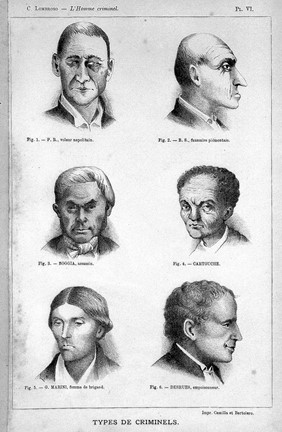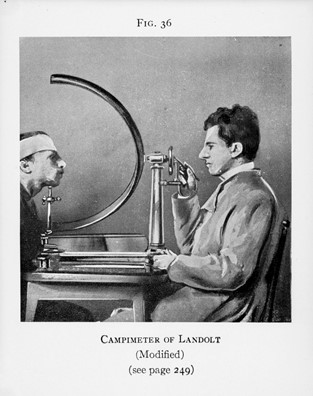6 Who Put the “Nature” in Naturalism? (Part 1)
Who Put the “Nature” in Naturalism? (Part 1)
The purpose of this topic is to introduce some of the scientific concepts that shaped Naturalist fiction in America. The connection between evolutionary biology and a novel about a dentist may not seem obvious at first. Yet the way Norris wrote about habit, sexuality, violence, and the relation between individuals and their environments was infused with his understanding of humans as biological beings.
Naturalism and Evolution
To a far greater extent than the Realists, Naturalist writers took up the challenge posed by the British naturalist Charles Darwin to both a Christian narrative of human origins and an Enlightenment faith in human reason. Darwin was a complex thinker, but we can summarize his most important insights as follows:
- Humans are animals.
- Human evolution is not finished, and never will be finished unless the species becomes extinct. Evolution is a process without a goal. By this reasoning, humankind cannot be said to have been made in the image of God.
- Characteristics appear in individuals as a result of random mutations. Whether a characteristic becomes widespread depends on two processes: natural selection, the means by which characteristics that help creatures flourish in their environment tend to be passed to the next generation, and sexual selection, which describes the means by which members of a species select mating partners with characteristics they find attractive and compete with one another for mates.
To read more about Darwin’s influence on nineteenth-century culture (with a British focus), visit The Victorian Web’s “Charles Darwin” index.
Interpreters of Darwin continue to argue about whether evolution is a deterministic process—an algorithm dictating the outcomes of all life on Earth—or an open process that allows for chance and improvisation. Norris, along with many Naturalists, fell into the deterministic camp.
Some late nineteenth-century thinkers believed that human evolution had already reached its peak, a claim that is wholly incompatible with Darwin’s findings. Mainstream commentators worried that immigrants and African Americans were “contaminating” the white race, or that white, middle-class women, who were entering the workforce in higher numbers, were not bearing enough white, middle-class children. Others feared that the comforts of civilization were making people “soft,” or that factory work was taking away people’s individuality and creativity. Naturalist fiction is full of morbid warnings that the history of humankind was “ticking toward its end.” In McTeague, this apocalyptic fear manifests itself through figures of female infertility, infants who die shortly after being born, and sexless romantic partnerships (Fleissner 203–204).
Whereas Realism as a literary movement focused on the self-made individual, Naturalism was preoccupied with the impossibility of rising above one’s biological origins. In the words of critic Eric Sundquist, Naturalism “dramatizes the loss of individuality at a physiological level” (quoted in Campbell, “Naturalism in American Literature”). When McTeague puts Trina under anaesthetic for her surgery, his sexual desire dissolves the distance between himself and his ancestors:
Below the fine fabric of all that was good in him ran the foul stream of hereditary evil, like a sewer. The vices and sins of his father and of his father’s father, to the third and fourth and five hundredth generation, tainted him. The evil of an entire race flowed in his veins. Why should it be? He did not desire it. Was he to blame? (ch. 2)
The recurrence, in the present, of traits one had presumably left in the evolutionary past was known to late nineteenth-century theorists as atavism. The word was derived from the Latin word for “great-grandfather’s grandfather” (Seitler 2). Atavistic traits seemed to show that evolution was not an entirely linear path from one stage to the next (e.g., “wild” to “domesticated”). Darwin’s The Descent of Man (1871) concludes, on a pessimistic note:
Man may be excused for feeling some pride at having risen, though not through his own exertions, to the very summit of the organic scale; and the fact of his having thus risen […] may give him hope for a still higher destiny in the distant future. […] We must, however, acknowledge, as it seems to me, that man with all his noble qualities, with sympathy which feels for the most debased, with benevolence which extends not only to other men but to the humblest living creature, with his god-like intellect which has penetrated into the movements and constitution of the solar system—with all these exalted powers—Man still bears in his bodily frame the indelible stamp of his lowly origin. (Darwin 619, ch. 21)
Within him, a certain second self, another better McTeague rose with the brute; both were strong, with the huge crude strength of the man himself. The two were at grapples. There in that cheap and shabby ‘Dental Parlour’ a dreaded struggle began. It was the old battle, old as the world, wide as the world—the sudden panther leap of the animal, lips drawn, fangs aflash, hideous, monstrous, not to be resisted, and the simultaneous arousing of the other man, the better self that cries, ‘Down, down,’ without knowing why; that grips the monster; that fights to strangle it, to thrust it down and back. (ch. 2)
It is tempting to read this scene as a conflict between instinct and morality, yet neither of the two McTeagues in the quarrel, the brute nor the better man, knows why he is fighting. The word stupid appears more than 25 times in the novel (Levenson 170). In Norris’s world, people act unreflectively, even mindlessly. They re-enact scenes from their personal or ancestral history over without purpose or understanding. Whenever Maria Macapa says “Had a flying squirrel an’ let him go,” the other characters hear her words (if they do hear them) as a tic, not a meaningful utterance (ch. 3).
If characters in Naturalist fiction are often subject to impersonal forces beyond their control, they are just as frequently at the mercy of sheer chance. Part of McTeague’s plot hinges on a lottery ticket. These two strands of determinism and randomness combine to form a world where individuals have very little control over their lives.
The idea of a “second self” will be applied to Trina, too. How would you compare the duality said to exist within Trina to the duality within McTeague?
Norris and degeneration theory
One of Norris’s professors at the University of California at Berkeley was Joseph Le Conte, an evolutionary theorist who had fought for the slaveholding South during the Civil War. Le Conte believed that Darwinism provided a justification of slavery (though Darwin himself was opposed to slavery) and taught that immigrants were less developed than Anglo-Saxon whites. The term “Anglo-Saxon” referred to descendants of the Germanic peoples who had inhabited England prior to the eleventh century, and sometimes to northern Europeans in
general. It did not include Celtic cultures such as the Irish, the ethnic group to which McTeague belongs.
The notion that people who commit crimes are genetically predisposed to do so was popularized by the Italian anthropologist Cesare Lombroso, who “held that criminals were members of a biological subspecies which was at an earlier stage of evolution than normal man, and he popularized the term ‘born criminal’ to describe the lawbreaker who inherited his criminal tendencies either from criminal parents or from parents who had undergone a degenerative process” (Pizer, “The Genesis of McTeague” 300). As Donald Pizer, a distinguished scholar of American Naturalism, points out, there was an optimistic element to Lombroso’s criminology, implying as it did that deviance was a relic of an earlier evolutionary stage from which most humans had advanced. Lombroso cited alcoholism as one cause of degeneration, the reversal of the evolutionary process.
Lombroso believed criminals could be identified by distinctive physical traits, which he called “stigmata.” This belief, which is entirely false, lent a scientific air to racism, anti-Semitism, and discrimination against the disabled. We should also note that physiognomy—the attempt to predict a person’s character based on the shape of their face—was not a new idea, nor was it universally accepted. As early as 1851, Herman Melville called physiognomy “a passing fable”—but so, he said, was “every other human science” (Moby-Dick, ch. 79). Nevertheless, physiognomic ways of seeing had a significant impact on Realism and Naturalism.


Norris learned of Lombroso’s theories from the work of the Hungarian-born, Germany-based writer Max Nordau. Nordau’s Degeneration was written in 1892 and translated into English in 1895, quickly becoming America’s “most discussed book of the year” (Pizer, “The Genesis of McTeague” 301). Nordau argued that degeneration could affect cultures the same way it affected biological organisms. He denounced many prominent European writers for their morbid interest in death and decay, their eroticism and homoeroticism, and their decadent embrace of “art for art’s sake.” All of these tendencies, Nordau argued, represented a sickness in the artist that, if left unchecked, had the potential to infect the whole culture. The notion that a challenging work of art was the product of mental disorder would eventually lead to the censorship or destruction of many works of art by the Nazis. Accusations of cultural degeneracy were most often levelled at Jewish artists and intellectuals, even though Nordau himself was Jewish. We can hear an echo of Nordau in Norris’s rejection of “style” and literariness.
In the years between the Harvard draft of McTeague in 1895 and the revised version, which he completed in 1897, Norris was digging deeper into pseudo-scientific theories of race and crime. He had become friends with a doctor at the San Quentin State Prison, who believed that “homicidal mania” was an inherited tendency (Pizer, “The Genesis of McTeague” 301). And his writing in the San Francisco Wave, both journalism and fiction, was a gallery of small-time crooks, prisoners, asylum patients, and children with congenital disabilities believed to be the result of racial mixing or immoral conduct on their parents’ part.

